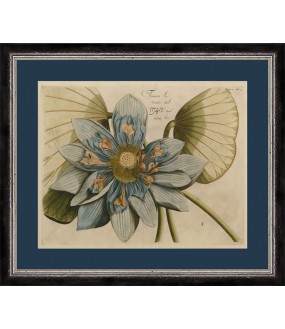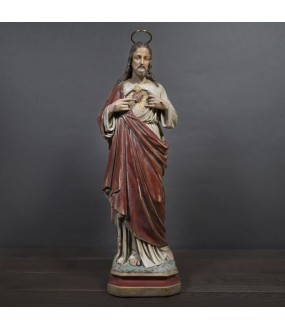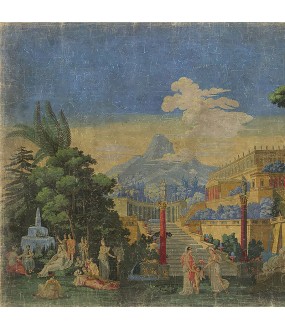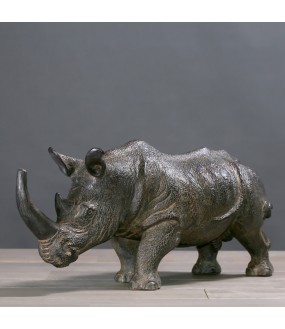STYLES
La Maison Arteslonga likes to explore and bring together styles and eras in a desire for harmony and softness.
Modernist
Minimalist Raw
Luxury Movie Star 50s
Timeless
Orientalist
Baroque
Proustian Era
Greco-Roman
Cabinet of Curiosities
Ethnic Chic
-
Elephant Table Lamp Porcelain & Bronze Metal
€1,540.00Magnificent elephant lamp made of black porcelain and bronze-finish metal details.
Height of 75cm.
Elegant table lamp for an original interior decoration.
-
Bespoke Console Chateaubriand
€2,620.00The Chateaubriand console is a contemporary French artisanal creation in solid oak or cherry wood, stained and patinated by hand.
A piece of furniture entirely designed in the workshop and made exclusively to order.
The beautiful Chateaubriand console features three drawers and handles adorned with acanthus patterned handles.
Ornamentation with golden acanthus motif,
Patina made by hand.
-
Blue Lotus Engravings, Set of 2
€680.00A set of two beautiful prints of magnificent large blue lotuses.
Engravings with blue marie-louis and very beautiful frame with black wood ornamentation and silver edging.
Glass size: 50x70cm
The lotus is an aquatic plant whose flower is magnificent and which is magnified in these two large engravings in a beautiful blue color. This particular tone of blue has earned it the name of a shade, azure tending to sky blue: caeruleum blue (ceruleum).
The blue lotus is actually a water lily.
Although it bears the name Lotus, the Blue Lotus (in Latin Nymphaea caerulea Savigny) is actually a water lily.
This aquatic plant grows on the edges of lakes and stagnant waters.
Today, it has almost completely disappeared from the Nile region and it is cultivated mainly in Asia (China and Thailand).
The blue lotus belongs to the family Nymphaeaceae (water lily family), group Apocarpiae, subgenus Brachyceras, and forms and subspecies None (cf. Slocum et al. 1996).
Lotuses were the most widely cultivated ritual plants in ancient Egypt. They grew wild and had also been planted in artificial bodies of water (Hugonot 1992).
The blue lotus was considered a sacred plant. The god of immortality and resurrection Nefertum was represented as a young man or a lion whose hair was decorated with a blue lotus flower. He offered the flower to the sun god Ra, to relieve the pain in his old body. The Egyptians especially appreciated their enchanting scent of hyacinth, their symbolism and probably also their intoxicating effects...
Lotus buds and flowers were popular head and hair ornaments. The garlands placed in the tomb of Pharaoh Ramses II (1290-1223 B.C.E.) were almost entirely composed of white and blue lotus flowers (Germer 1988). Many buds, petals and garlands have been found as decoration for mummies or as funerary objects.
In ancient Egypt, the blue lotus was closely linked to the concepts of the afterlife and rebirth. The flower represents enlightenment and the awakened consciousness of the deceased; it is “this lotus flower which shines in the earth” (Book of the Dead, chapter 174, line 30; cf. Dassow 1994).
In the myth of the battle between Horus and Seth, the lotus flower appears as a symbol of the divine all-seeing eye: when Seth found Horus resting under a tree in an oasis, he plucked out both his eyes and buried them in the sand. After which they transformed into lotus flowers.
Lotuses are rustic aquatic plants of absolute beauty, vigorous and imposing and can grow anywhere in France!
-
Chapel Christ Coeur Sacré H68cm
€520.00Christ the Sacred Heart Crowned, faithful representation of the religious statues popular in the 19th century from Rome to Lourdes, without forgetting Paris where the famous Maison Raffl implemented a molding technique which allowed their democratization.
Statue made of solid plaster then colored and patinated by hand.
Please note that the halo is sold with the statue.
Here a rare example due to its high size, its crown and its colors
Height: 68 cm!
-
Anamorphosis Napoleon Bonaparte under Globe
€480.00Anamorphosis Napoleon Bonaparte under Globe
Anamorphosis was born from the work on perspective by Piero della Francesca, a Florentine painter and mathematician of the Quattrocento.
This Art of secret perspective allows, thanks to a “trompe-l’oeil” technique, to create an impression of reality by restoring a 3rd dimension.
We were inspired by this technique to create Anamorphoses-Butterflies: at first glance, the eye is charmed by a colorful and poetic flight of butterflies... then suddenly, the unexpected image springs out and reveals itself to the viewer and doubles it perception appears.
In reality, a master painting serves as a motif for the butterflies, while the butterfly recreates a master painting...
Presented under a glass globe, so that this anamorphosis does not disperse on your walls!
-
Panoramic, Greek Fresco 490xH240cm
€1,800.00Panoramic, Greek Fresco 490xH240cm
A superb craftsmanship.
Printed on recycled paper then worked manually to give it its unique appearance, this decorative panel is made on crumpled paper.
At the beginning of the 19th century, panoramic wallpapers took over the space of decorative painting by offering decorations created mechanically, in the style of hand-made trompe l'oeil, then very popular among painters of the time. .
They have the ambition to create the illusion in bourgeois interiors thanks to large decorations, landscapes and wall frescoes.
These panoramas are made on crumpled paper.
They receive the greatest care during printing, and wear and aging perfect their outdated appearance. They are then crumpled by hand before being glued onto a canvas.
Detail :
- Material: recycled paper
- Dimensions: 490xH240cm.
-
Terracotta Rhinoceros
€1,000.00A terracotta Rhinoceros, faithful reproduction of the famous African animal, in the tradition of the Natural History Museum.
The model presented here is handmade in terracotta by our artisan modelers.
An object for an original and elegant interior decoration.









